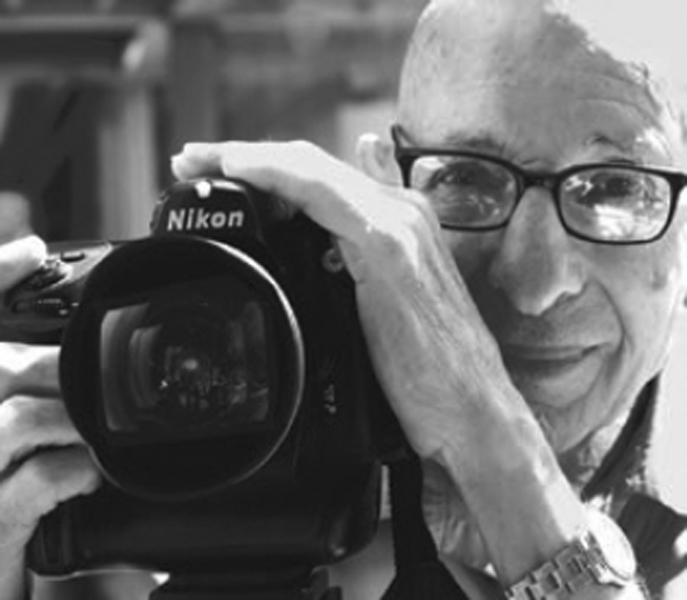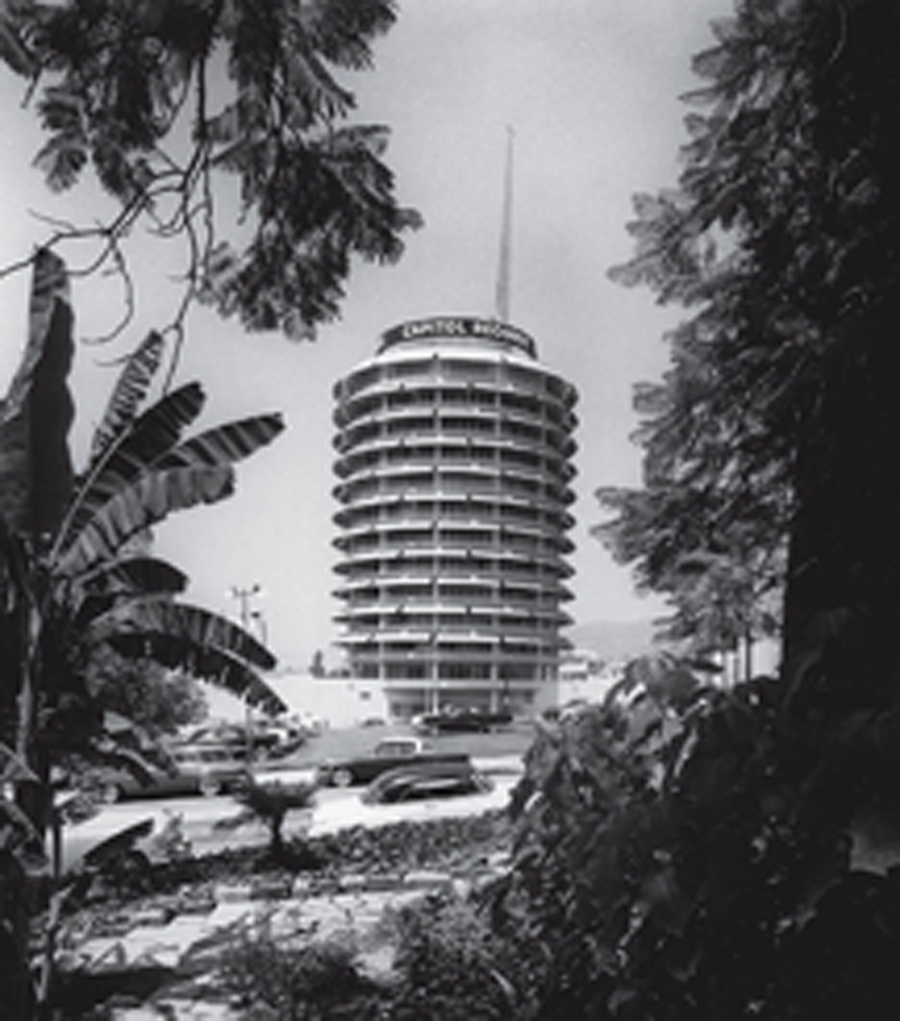Marvin Rand Interview (1989)
By Joelle Steele (Nancy Martelli)
In the early 1980s, I was doing large floral arrangements for the opening night of Opera restaurant on Wilshire in West LA. Architectural photographer Marvin Rand arrived to photograph the restaurant, and he commented on my Rolleiflex TLR on a nearby table. We got to talking and over the years had several talks about architecture and photography over lunch. This is a brief interview with him.

NM: For the record, tell me about your early life.
MR: I was born in 1924, here in Los Angeles. My mother designed clothes and my father made furniture. My childhood was … uneventful.
NM: And what about your education?
MR: Well, as a young boy I was what they used to call a “camera buff.” So after high school, I studied photography at LA City College. That led me to become an aerial photographer during World War II. After that, I studied at the Art Center College of Design.
NM: And after that?
MR: Eventually I opened my own studio. That was in 1952. I was doing advertising photography at the time – products and places. But it wasn’t too long before I was able to break away and find my niche, so to speak.
NM: And your niche was architecture.
MR: Yes. I’d always liked architecture, but I didn’t see a future for myself as an architect. I just liked photographing buildings. Houses or commercial, didn’t matter. I saw the artistry behind every building, and there was something worth capturing on film no matter where I went in Los Angeles.
NM: When did you decide to pursue that specialty?
MR: Early 1960s. That was when I “officially” became an architectural photographer. And I admired the many years of architectural history that was everywhere around me. I wanted to document it, especially the works of architects like Frank Lloyd Wright and Craig Ellwood.
NM: Did you photograph Sturges House? The one in Brentwood that looks a little like Falling Water?
MR: Yes. In fact Wright designed Sturges shortly after he did Falling Water. Some of the others I shot were Mayan-influenced from the era of Art Deco. I can tell by the expression on your face that they aren’t your cup of tea (laughs).
NM: Yeah, not my thing. Although I do like the Mayan Theater downtown.
MR: You are such a traditionalist (laughs). I imagine you love the Bradbury Building too.
NM: Yes, but I do like some modernist structures too. I like Koenig’s Stahl House and not far from me is Gehry’s Norton House in Venice Beach.
MR: Well, architecturally, most of Los Angeles County is composed of Mission Revival and Craftsman buildings. All real beauties. Your kind of thing.
NM: My mind just went to Gamble House in Pasadena.
MR: Definitely. But there are some great examples of modern architecture as well, like the Bonaventure hotel. And in Pacific Palisades there are some great Ray Kappe houses. If you can get in to see it there’s an excellent example of one on Latimer Road.
NM: I’ll have to look into that. Let’s talk about your photographic technique in artistically depicting the various buildings you’ve shot.

MR: Okay. Well, to begin with, I want the architecture to speak for itself in my photographs. But, it always needs some help along the way. Every structure is different, and how a building looks varies throughout the day. As the sun moves along, certain architectural elements are emphasized while others are obscured. I want to capture that exact moment when a building’s unique features are a perfect reflection of the architect’s vision.
NM: So, how many photographs need to be taken before this vision is achieved?
MR: No way to ever know in advance. Fortunately, it’s fairly easy to get the weather to cooperate here since L.A. is generally sunny. And since the sun is my lighting, I look at the building at various times of the day and take some test shots from various angles. Then I look at the prints and decide when to come back for the final shots.
NM: How do you deal with shooting around cars and people?
MR: I often shoot on weekends when there’s less traffic in the commercial areas. Houses in residential neighborhoods can be any day.
NM: Do you shoot negs or slides? Do you have a preference?
MR: I shoot both. No preference. Just what works for the subject.
NM: Any idea how many photographs you’ve taken … so far?
MR: I haven’t counted them, but I think at least 25,000. Could be more. Don’t know.
NM: It sounds like you’ve covered a lot of territory in your quest to document the architecture here. You’re a native Angeleno, so I guess you’ve probably seen the city as it’s grown and changed over time.
MR: Seen it and documented it.
NM: We’ve talked before about how I don’t like the city and you’re in love with it.
MR: Yes, but it’s not just the city. It’s the wealth of architectural styles that I’m in love with. It’s always a wonder to me how many buildings have survived for more than 100 years. L.A. is a great architectural showcase, and I do love architecture.
NM: I guess when you put it that way, I can see how you would love it here. Are there any buildings you’ve photographed that stand out as your favorites?
MR: Some of my earliest efforts are some of my favorites. Capitol Records in Hollywood always comes to mind. I shot it from an angle that can’t be achieved today.
NM: When did you shoot it?
MR: Mid-50s. It was by Welton Becket, and I’ve shot other works by him.
NM: Other favorites?
MR: Naming favorites is hard for me to do. My architectural tastes are very eclectic. I’ve even shot the Watts Towers. But, back to your question, I guess most of my favorites would be examples of California modernism. That movement really sings to me. Its clean lines and geometric shapes create a warm and natural feeling that I enjoy capturing.
***
